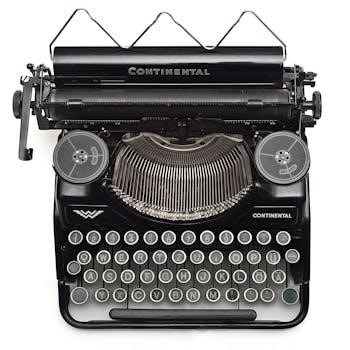Article Plan⁚ The Broken Warriors Daughter PDF Free Download
“The Broken Warriors Daughter” is a captivating story. It involves werewolves, destiny, and powerful alphas. Discover the characters in this novel.
Overview of “The Broken Warriors Daughter”
The gripping story of Cara Nelson and her intertwined fate awaits! This is a tale of werewolves, warriors, and the burdens of a powerful destiny.
Synopsis and Main Characters
“The Broken Warriors Daughter” introduces us to Cara Nelson, the daughter of two Guardians, destined for greatness but facing immense challenges. Her mother sacrificed herself to save the Luna and her son, Rik, the future Alpha, while her father was paralyzed protecting the current Alpha. Cara is meant to become Rik’s Guardian when he takes over, but their relationship is complicated. The story follows Cara’s journey as she navigates her destiny, rival Alphas, and the complexities of werewolf lore. Luaine, daughter of the legendary Irish warrior Cuchulainn, also features in a related narrative, facing loss, betrayal, and suffering as she comes of age; Other notable characters include powerful Alphas and figures from Irish myths, weaving a rich tapestry of fantasy and adventure. The novel explores themes of destiny, sacrifice, and the strength found in overcoming adversity. It is a thrilling tale of love, loyalty, and the fight for survival in a world of werewolves and warriors.
Luaine’s Story in “The Warriors Daughter”
Luaine, the daughter of Cuchulainn, faces immense challenges. Her journey is filled with loss, betrayal, and suffering, shaping her into a strong warrior.
Luaine’s Challenges and Growth
Luaine, daughter of the great Irish warrior Cuchulainn, experiences a life-altering transformation in “The Warriors Daughter.” Initially, she knows her father as a loving and playful figure, regaling her with exciting tales of his heroic feats. However, her idyllic childhood shatters when Cuchulainn returns from war gravely injured, marking Luaine’s first painful step toward adulthood and the realization that even heroes are vulnerable. This event triggers a series of hardships, including loss, betrayal, suffering, and fear, forcing Luaine to confront the harsh realities of her world. She must find inner strength, a strength that transcends physical prowess and martial skills. Luaine’s journey is one of resilience and adaptation, as she navigates a world filled with danger and uncertainty, ultimately shaping her into a warrior in her own right, carrying the legacy of her father while forging her own path. The challenges she overcomes define her growth and reveal the depth of her character.
Cara’s Destiny in “The Broken Warriors Daughter”
Cara Nelson’s destiny unfolds as the next Guardian. She is the daughter of two Guardians. Her path is intertwined with rival Alphas in this web novel.
Cara as the Next Guardian
Cara Nelson, the daughter of two Guardians, faces a destiny intertwined with the fate of her pack. Her mother sacrificed herself to save the Luna and her son, Rik, the future Alpha. Cara’s father became paralyzed protecting the current Alpha. As the next Guardian, Cara is meant to protect Rik when he ascends to Alpha status. However, Rik’s feelings towards Cara complicate matters. Unlike her parents, Cara discovers that her wolf holds a unique and powerful secret, setting her apart from previous Guardians. This revelation challenges her understanding of her role and purpose. The responsibility of being the Guardian weighs heavily on Cara, especially with the looming threats from rival Alphas who seek to exploit her power. She must navigate treacherous alliances, confront her own insecurities, and ultimately embrace her extraordinary destiny to safeguard her pack. Cara’s journey is one of self-discovery, courage, and unwavering loyalty, as she strives to become the Guardian she was destined to be, despite the obstacles in her path. She is forced to make difficult choices that test her strength.
Availability of “The Broken Warriors Daughter”
“The Broken Warriors Daughter” is available on platforms like Amazon, Audible, and GoodNovel. Find it in ebook, audiobook, and online formats now!
Platforms for Reading and Downloading
For readers eager to dive into the enthralling world of “The Broken Warriors Daughter,” several platforms offer convenient access to the story. Digital versions of the novel, including EPUB, PDF, AZW, and MOBI formats, are available for download, allowing you to enjoy the book on various devices such as e-readers, tablets, and smartphones. Online reading options are also plentiful, with many websites and apps providing access to the full text through their e-reader interfaces. Popular platforms like MegaNovel and GoodNovel host the story, offering readers the chance to explore the adventures of Cara Nelson and the werewolf lore that defines her destiny. Additionally, for those who prefer listening to stories, the audiobook version of “The Broken Warriors Daughter” can be found on platforms like Audible and GoodFM, enhancing the immersive experience with professional narration. Whether you’re looking for a free download, an online reading experience, or an audiobook to enjoy on the go, there are multiple ways to access this thrilling web novel and delve into its captivating narrative.
Reading “The Broken Warriors Daughter” Online
Explore online platforms to read “The Broken Warriors Daughter.” Find options for accessing free chapters and immerse yourself in Cara’s destiny.
Options for Reading Free Chapters
Delve into the world of “The Broken Warriors Daughter” by exploring various online platforms that offer free chapters. Many websites and apps provide a sneak peek into Cooper’s thrilling werewolf novel, allowing you to sample the story before committing to the full version. Look for options on platforms like GoodNovel, MegaNovel, or other online reading sites that frequently feature free chapter previews to entice readers. These previews often introduce you to Cara Nelson, the protagonist, and her intertwined destiny with powerful alphas, setting the stage for a captivating narrative. Additionally, some websites may offer limited-time promotions or access to free chapters as part of a marketing campaign. Keep an eye out for these opportunities to immerse yourself in the initial chapters of “The Broken Warriors Daughter” and decide if you want to continue the journey. Remember to check for legitimate sources and be wary of unauthorized websites offering free content, as they may infringe on copyright laws or contain harmful software. Enjoy exploring the beginning of Cara’s story and discovering the world of werewolves, guardians, and destiny.
Themes Explored in the Novel
The novel explores themes of destiny, werewolf lore, and the challenges faced by Cara. It delves into the intricacies of werewolf society and guardian roles;
Werewolf Lore and Destiny
Dive into the rich werewolf lore woven throughout “The Broken Warriors Daughter.” The story delves into the complex social structures of werewolf packs, the roles of Alphas and Lunas, and the significance of Guardians. Destiny plays a central role, particularly in Cara’s life, as she grapples with her predetermined path and the expectations placed upon her. The narrative explores themes of fate versus free will, questioning whether Cara can truly forge her own destiny or if she is bound by the ancient traditions and prophecies of her werewolf heritage. The novel examines the power dynamics within werewolf society, highlighting the responsibilities and burdens that come with leadership and guardianship. It also touches upon the challenges of maintaining balance and harmony within the packs, as well as the external threats they face from rival groups and supernatural forces. Ultimately, “The Broken Warriors Daughter” offers a compelling exploration of werewolf lore and the enduring power of destiny in shaping the lives of its characters, particularly Cara, as she navigates her unique and challenging path.
Reader Reviews and Online Discussions
Discover what readers are saying about “The Broken Warriors Daughter.” Find links to read the complete story and join online discussions about the novel.
Finding Links to Read the Complete Story
Are you hooked on “The Broken Warriors Daughter” and eager to delve into the complete story? Many readers find themselves captivated by Cooper’s werewolf novel and search for ways to access the full narrative; If you’re among them, you’re in luck! There are several avenues to explore in your quest to uncover every chapter of Cara Nelson’s destiny. Online reading platforms like MegaNovel and GoodNovel offer chapters of “The Broken Warriors Daughter,” but often require subscriptions or in-app purchases to unlock the entire story. Some readers have sought free links or websites where they can read the novel without cost, but it’s important to be cautious of potentially unreliable or illegal sources. A good starting point is to check online forums and discussion groups dedicated to werewolf novels or web novels in general; Readers often share tips and links to where they’ve found the complete story, or even offer to share copies themselves. Keep an eye out for recommendations of alternative platforms or formats, such as fan-made PDFs or online archives. Remember to respect copyright laws and support the author by seeking out legitimate sources whenever possible. Happy reading!
Alternative Platforms and Formats
Explore “The Broken Warriors Daughter” through audiobooks and digital formats. Discover different ways to enjoy Cara’s thrilling journey today.
Audiobook and Other Digital Formats
For those who prefer listening over reading, “The Broken Warriors Daughter” is available as an audiobook; This format allows you to immerse yourself in Cooper’s world while commuting, exercising, or relaxing at home. The audiobook version brings the story to life with professional narration, enhancing the emotional impact of Cara’s journey and the intensity of her challenges. You can find the audiobook on platforms like Audible and GoodFM, where a myriad of other appealing audiobooks and stories await.
Beyond audiobooks, “The Broken Warriors Daughter” can also be accessed in various digital formats, catering to different e-readers and devices. Whether you use a Kindle, Kobo, or Apple Books, you can download the novel in formats such as EPUB, AZW, and MOBI. These digital versions offer the convenience of adjustable font sizes, brightness settings, and built-in dictionaries, making your reading experience more comfortable and personalized. Platforms like Amazon, Barnes & Noble, Google Play Books, and Apple Books provide access to these digital formats, allowing you to enjoy the novel on your preferred device. The availability of multiple digital formats ensures that you can seamlessly integrate the story into your digital lifestyle, carrying Cara’s destiny with you wherever you go.


































